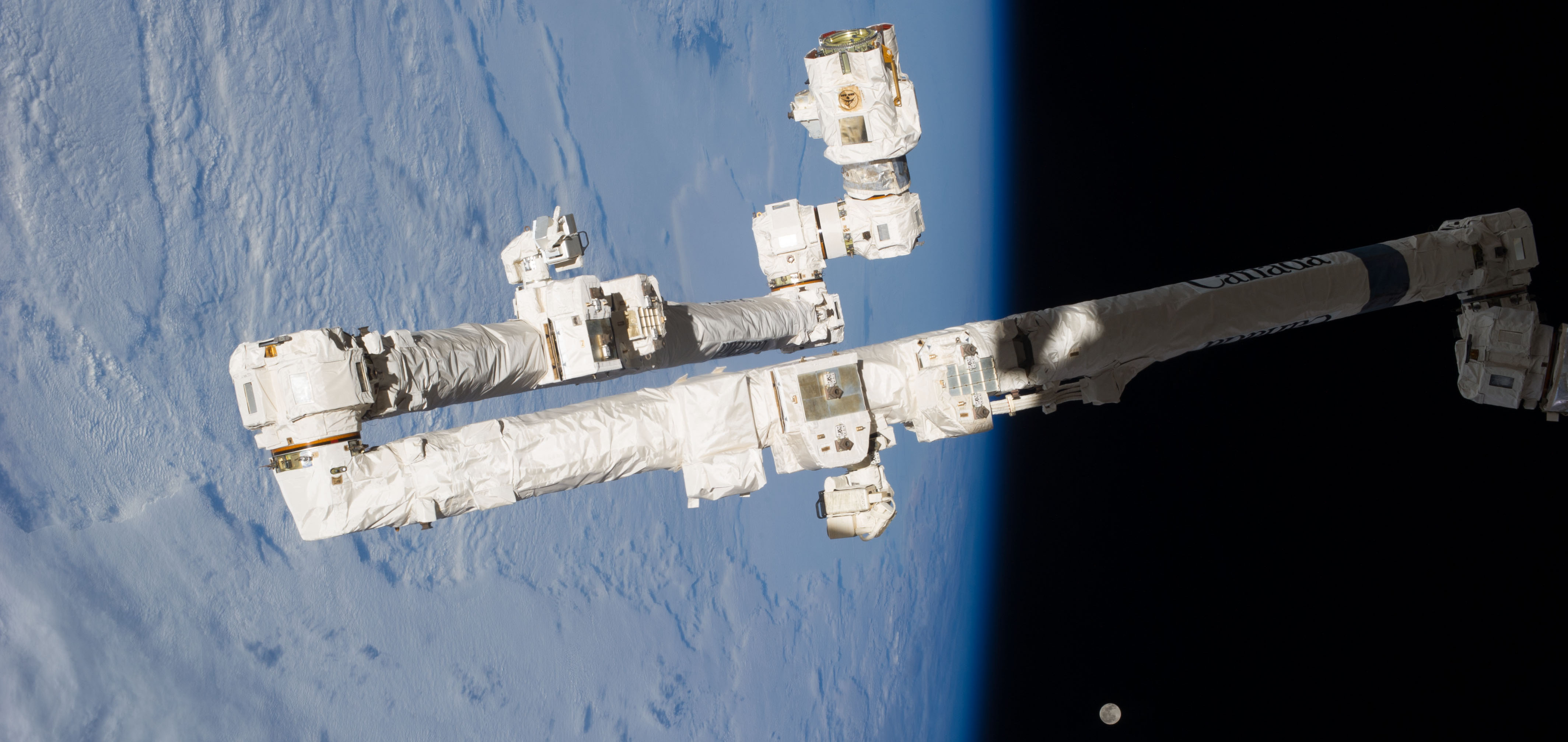I’m not an expert in geopolitics, so any of you who are will probably find many things wrong with this post. I apologize in advance for my ignorance, but I hope you will find something of value here regardless.
At the 2024 Astro Awards, a group of panelists were asked what they thought had been the most important changes in spaceflight over the previous decade. Their answers rang true: launch cadence, up-mass, connectivity. They were then asked to predict the next decade, and again the answers seemed reasonable: extending activity to cislunar space and increasing the types and number of in-space activities.
I don’t disagree with the panelists, but I would propose another set of major shifts that helped define the previous decade, and will help define the decade to come—those being the changes to the geopolitical landscape. In the last decade we have seen shifting international partnerships, the decline and rise of space superpowers, and the arrival of new entrants.
Vulcan: An All American Rocket
On January 8 of this year (2024) a brand new, never before flown rocket leapt off the pad in Cape Canaveral, Florida, on a perfect test flight marred only by failure of the payload and the long, long delay in getting to that first flight. At liftoff the two Blue Origin BE-4 engines drank down methane and LOX from the ULA built first stage, while Northrop Grumman GEM-63XL solid motors gave the whole stack a kick in the pants. Eventually the ULA Centaur stage and it’s two Aerojet Rocketdyne RL-10 engines took over, and the Beyond Space fairings fell away to reveal the Astrobotic Peregrine lander. Admittedly, Beyond Space is a subsidiary of the Swiss company RUAG, but ULA has brought manufacturing of those fairings to Decatur, Alabama, where ULA’s factory is.
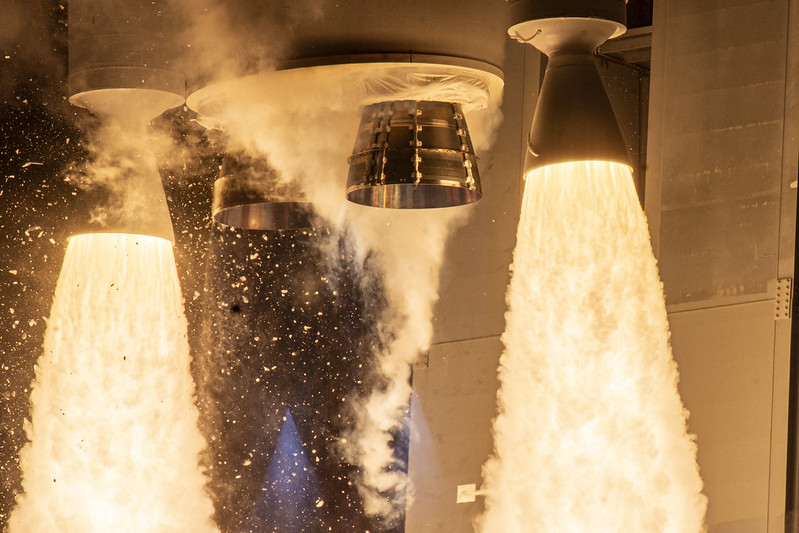
Why do I mention all these suppliers, which are notably all American? One needs to know a bit about the history of Vulcan to understand. United Launch Alliance is a joint venture between Lockheed Martin and Boeing, for the purpose of serving the US government’s launch needs. Formed in 2006, the company inherited Boeing’s (McDonnel Douglas’s) Delta rockets, and Lockheed’s Atlas rockets, both of which were designed to serve the DoD’s specific and demanding launch needs for national security satellites. Despite the Delta IV’s higher launch costs, it’s unique capabilities in it’s triple core configuration and the military’s desire to have redundancy in the event one launch system failed, meant that both the Delta IV and Atlas V were routinely launching satellites for the US military’s EELV program (Evolved Expendable Launch Vehicle). I say all this because my description of the Vulcan launch is remarkably similar to an Atlas V launch. Replace the GEM-63XL’s for GEM-63’s, reduce the count of RL-10’s from 2 to 1 (most of the time), and I could have just as easily been describing an Atlas launch—with one glaring difference. Instead of two American BE-4 engines at the base of the rocket, the Atlas V has a dual chamber RD-180, manufactured by NPO Energomash in Russia.
When Atlas could no longer hold up the world
The Atlas V was and still is the workhorse of ULA’s rocket fleet. Cheaper than a Delta IV, available in 13 distinct configurations to meet nearly all US government launch needs, certified for launching nuclear material, for NASA astronauts, and for high value military satellites, all with an enviable 100%(ish) success record, the Atlas V does not seem like it needs urgent retirement. Indeed, it took two external pressures for ULA to begin developing its replacement Vulcan Centaur, competitive and geopolitical pressures.
Competitively, ULA had been operating as a monopoly since it’s formation in 2006, launching all significant US government payloads (excluding the Space Shuttle). After failing to block the upstart SpaceX from securing launch pads at both Cape Canaveral and Vandenberg, and with SpaceX’s Falcon 9 likely to begin winning NASA contracts beyond ISS cargo, ULA had to hope that they could block SpaceX from also competing for military launches—which are ULA’s bread and butter. Ultimately, SpaceX and the USAF reached a settlement following a 2014 lawsuit protesting the military’s block buy of ULA launches, and SpaceX was granted the ability to compete for future military launch contracts. Atlas was already uncompetitive commercially, losing most major comsat launches to the French Arianespace and to Russia, and with the loss of their US government launch monopoly the cost of ULA’s launches needed to be slashed or the writing would be on the wall.
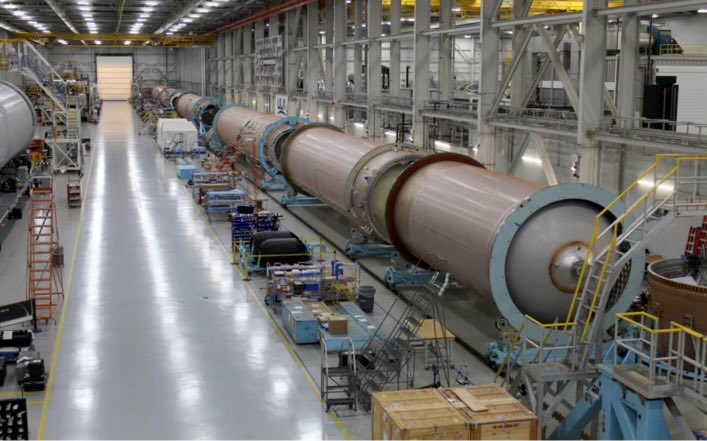
Perhaps more importantly for the origin of Vulcan is the Russian engine at the base of the Atlas V. In 2014, when Russia invaded the Ukrainian Crimea, the US military’s relationship with Russia turned sour, and the reliance of the US government on Russian rocket engines came under congressional scrutiny. It became a matter of law that the US military stop launching satellites on Russian rocket engines, leaving ULA with a serious problem. They could retire Atlas and solely launch the more expensive Delta IV, but that would be even worse, competitively, with the clear arrival of competition from SpaceX, and with potential competitors like Blue Origin looming vaguely on the horizon. This ultimately led to the creation of the Vulcan program as a means to supplant the Delta IV’s maximum performance and the Atlas V’s versatility and value, while also ending reliance on Russian engines. This unfortunately left ULA with another quandary. They needed to find an American rocket engine to replace the RD-180, and there weren’t many options. The RS-68 that powered the Delta IV was expensive and required hydrogen fuel—cost savings weren’t going to found with hydrogen first stages. The SpaceX Merlin wasn’t for sale. And… that was pretty much all the available options. ULA’s Vulcan would need a new rocket engine which would take years to develop, keeping the Atlas V as ULA’s main rocket for another decade following lawmaker’s concessions to allow the the DoD to continue using the Atlas V until a replacement was available.
The US-Russo Alliance: A Long Goodbye
The US–Russian relationship has long been marked by tension. From the alliance in WWII to the Cold War, the space race to the Apollo-Soyuz test project, the fall of the Soviet Union to today’s adversarial relationship, American–Russian policy is most easily described as complicated.
When the Soviet Union collapsed in 1991, the US government looked for ways to maintain the now former Soviet space program, rather than let it collapse and see its many scientists and engineers disperse to hostile nations where their knowledge could aid in the development of missile technology. This, in part, led to US involvement in the Mir space station, Russian collaboration on the International Space Station, and to Russian rocket engines powering the US military’s space enterprises.
It was a good plan. The Soviet Union had developed a plethora of space technologies in which the US was inferior. With the exception of Skylab, America had no experience with space stations or long duration human spaceflight. The Soviets had built nearly a dozen space stations. The Space Shuttle—while marvelously capable and even meticulously imitated by the Soviets (a program that created the most capable heavy lift rocket of the time, and also nearly bankrupted the Soviet space program)—had an extremely limited on-orbit capability measured in mere weeks. The Soviet Soyuz, though still mostly unchanged from the 60’s, could spend many months at a space station, offering crew an assured ride home. American rocket engines, while plenty capable and featuring some technologies that had eluded the Soviets, were second fiddle to the efficiency, cost, and quantity of Soviet designs.
And so, when the US military was seeking proposals for new heavy lift rockets for national security launches, it encouraged and helped facilitate the use of Russian rocket engines, resulting in Lockheed Martin (and later ULA) purchasing over 100 state of the art engines from Russia’s premiere rocket engine manufacturer.
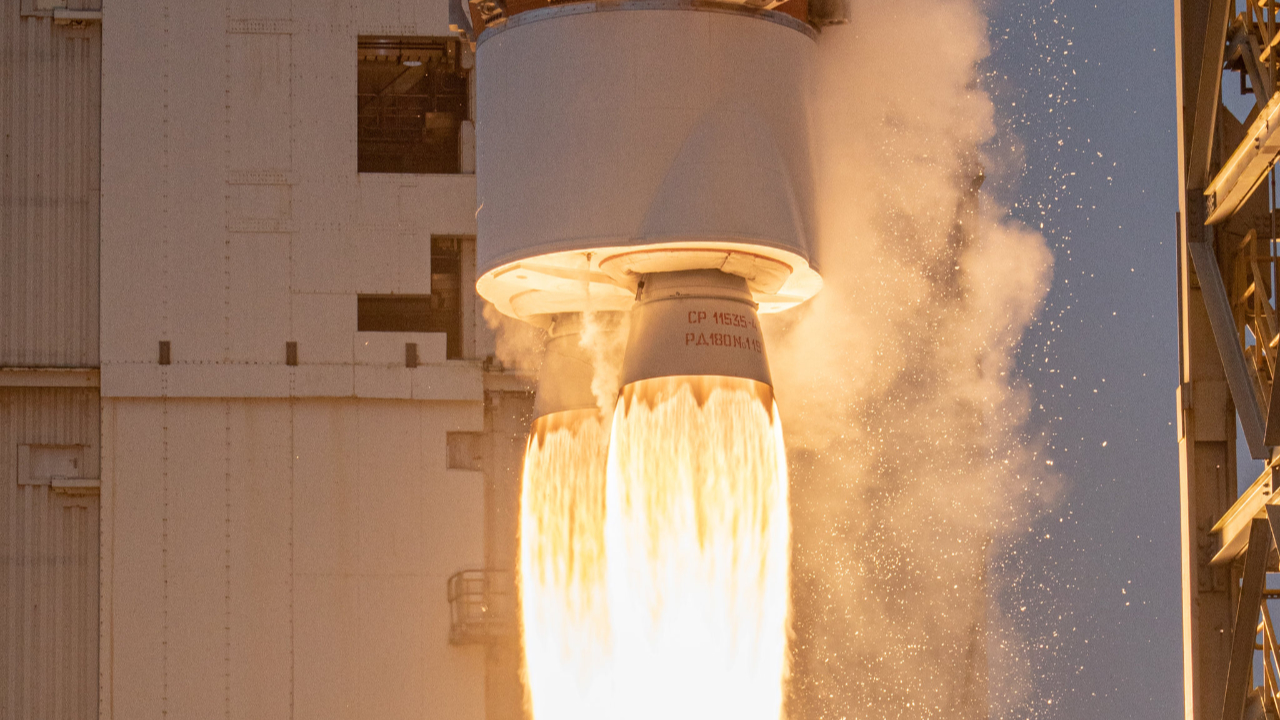
From fear and pandemonium following Sputnik and the realization of ICBM’s, to nationalistic competition in human spaceflight, to cooperation and feigned friendship with the Apollo-Soyuz test project and increasingly sophisticated spy satellites amid rising nuclear tensions, to actual cooperation in human spaceflight with Mir and the ISS, to those same spy satellites now launching on the former enemy’s rocket engines, the path of US-Russo space relations is as long and complicated as spaceflight itself. Like all prior era’s, the period of cooperation in the 90’s and 2000’s would not last.
The Beginning of the End
With the Russian invasion of Crimea in 2014, the hammer began to fall. Even on the civil side tensions began to rise, although NASA and ROSCOSMOS (the Russian state space corporation) continued to maintain a high level of cooperation on the International Space Station. This is in part due to the ISS’s design necessitating both segments to work together—however, reliance on Russia was already becoming a sticking point for NASA.
With the retirement of the Space Shuttle in 2011, the US was left without domestic crew or cargo capabilities, but the fortuitous Commercial Cargo Resupply program would see SpaceX and Orbital Sciences begin launching cargo to the ISS within only a couple years of the Shuttle’s retirement. Crew however, was a more serious affair. The Russian Soyuz served as the only option for crew transport to the ISS, forcing NASA to pay an ever increasing rate for the launch and return of NASA astronauts to the station. 2014 again proved to be a crucial year, when NASA selected finalists for it’s commercial crew program to eventually launch crew to the station on brand new US spacecraft. Again SpaceX was selected, along with Boeing who planned to use the Atlas V as the rocket for their capsule. The explosive leader of Russia’s space program, Dimitri Rogozin, would become increasingly hostile after the Russian invasion of Crimea and the resulting US sanctions against Russia, at one point making the comment that “After analyzing the sanctions against our space industry, I suggest to the USA to bring their astronauts to the International Space Station using a trampoline”.
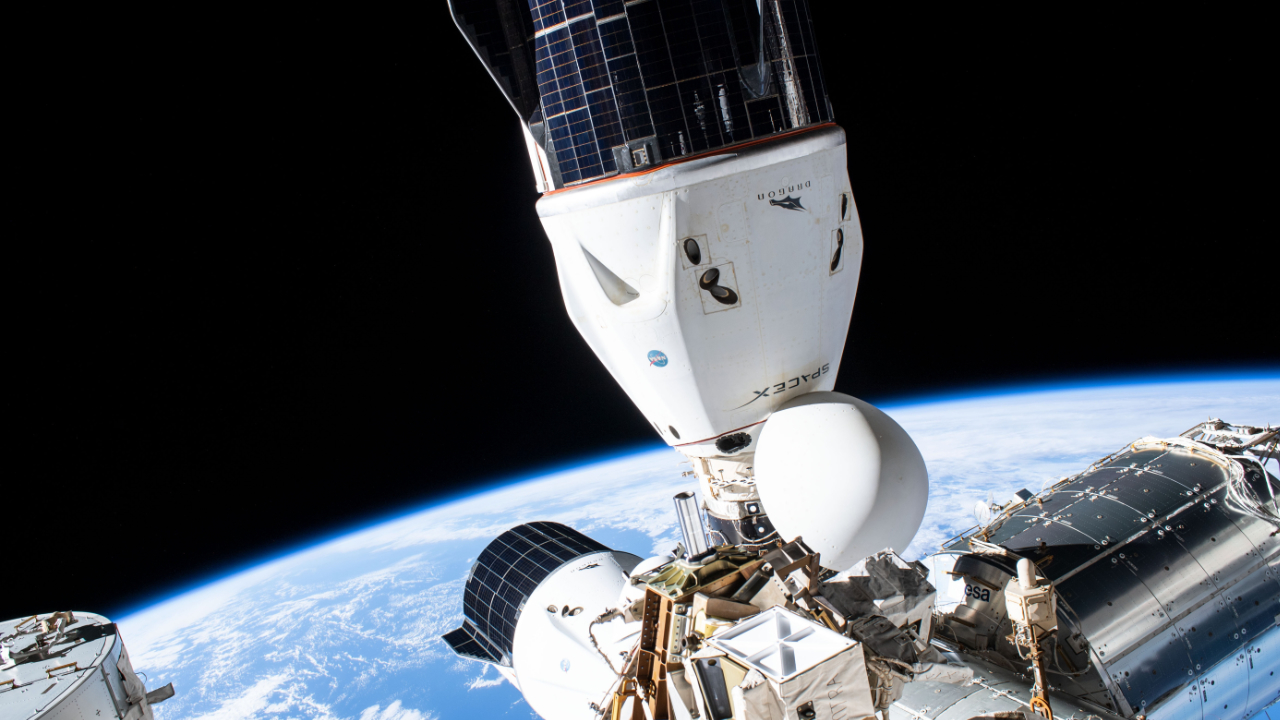
Quality Uncontrol
It took six more years for the US to regain domestic crew launch capability with SpaceX’s Dragon (while Boeing’s Starliner has yet to become operational as of this writing), but it was already overdue, as Soyuz seat prices were approaching $100 million per astronaut, per mission. NASA and ROSCOSMOS would work out a seat barter agreement where one Dragon and Soyuz seat would be swapped to ensure access to the station by both nations, but NASA could finally stop paying for Soyuz seats with operational Dragon flights. This seat barter is good in both concept and practice, but perhaps more-so for Russia, as the last decade has shown an increase in quality control problems on both their rockets and spacecraft.
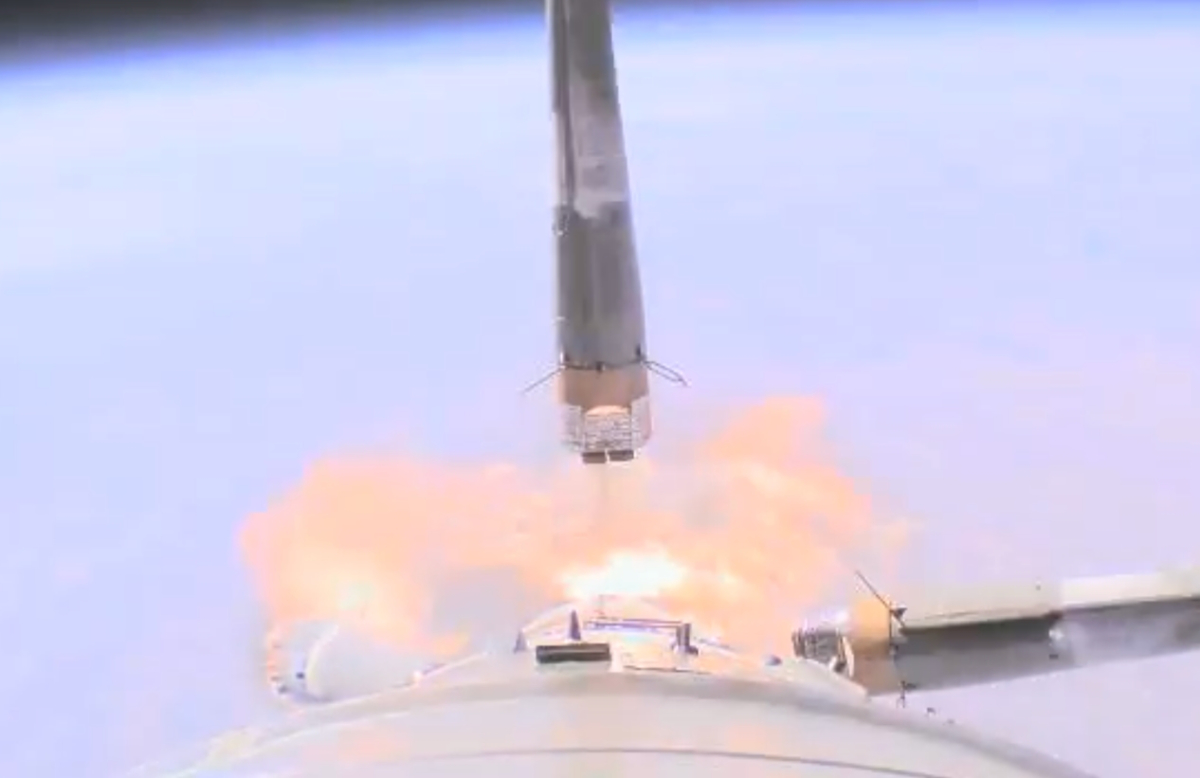
In 2018 a hole was discovered in a Soyuz spacecraft while at the ISS, which Russian state media blamed on a “hysterical female NASA astronaut with a drill” (paraphrase mine), despite all evidence pointing to a technician’s mistake and cover up during manufacturing. In 2019, a Soyuz launch to the ISS failed resulting in the crew experiencing a high-g abort, and leaving the station short staffed. In 2021 the new Russian module Nauka spun the ISS for several revolutions following docking, endangering the whole facility and the crew inside. In late 2022, radiators leaked on a Soyuz, requiring an uncrewed return and an empty backup vehicle to be launched. In 2023 radiators on a Progress cargo vehicle leaked, followed by a radiator on the Nauka module leaking. Even the Russian station modules are beginning to fail, with a now five year old persistent air leak in the Russian Prichal module becoming a 5/5 risk on NASA’s internal risk matrix. The station remains inextricably linked with Russia, as Russian modules continue to provide critical functions, but NASA continues to reduce that dependency, with cargo, crew, and eventual staion disposal (which was baselined to be performed by several Russian Progress spacecraft) now developed domestically.
Staging Imminent
When Russia invaded Ukraine again in 2022, sanctions increased, and any space cooperation with Russia outside of the ISS became effectively impossible. ULA breathed a sigh of relief as they had (wisely) already acquired all remaining RD-180 engine’s they would need to fly out the Altas V program, but others were not so lucky. Northrop Grumman, the current owners of the Cygnus cargo spacecraft that resupplies the ISS, were left in a predicament with their Antares rocket, which used Russian engines and a Ukrainian first stage. Having already been redesigned once after a catastrophic failure of the first engines (refurbished engines from the ill fated Soviet N1 moon rocket), Antares was facing a second major redesign, this time entirely driven by geopolitics. There were only enough engines and tanks in the US for two more launches—beyond that new engines would be needed, and supply of the Ukrainian rocket stage was unlikely to remain viable.
The last nails in the cooperative coffin came with two NASA space station decisions. The possible involvement of Russia in the Lunar Gateway station ended when their airlock contribution was instead taken over by Saudi Arabia. When the end of the ISS was given real sticking power with the award of a deorbit vehicle contract for 2030 delivery also means the end of the Russian segment. At that point, Russia will no longer have any meaningful space cooperation with the West, and with its dwindling budget, it may lack any meaningful human space program at all.
Separation Confirmed
It was not only the US that severed space ties with Russia over the second invasion of Ukraine. The European space programs were swifter and more decisive. With the advent of war, the launch of a Soyuz rocket from Kazakhstan with internet satellites for OneWeb was halted with a demand that the UK government divest it’s stake in the constellation, which of course didn’t happen. The satellites were seized, personnel were evacuated, and the launch contract, which included several more launches on Soyuz rockets and was organized through the European launch conglomerate Arianespace, was effectively null and void. No returns, no refunds.
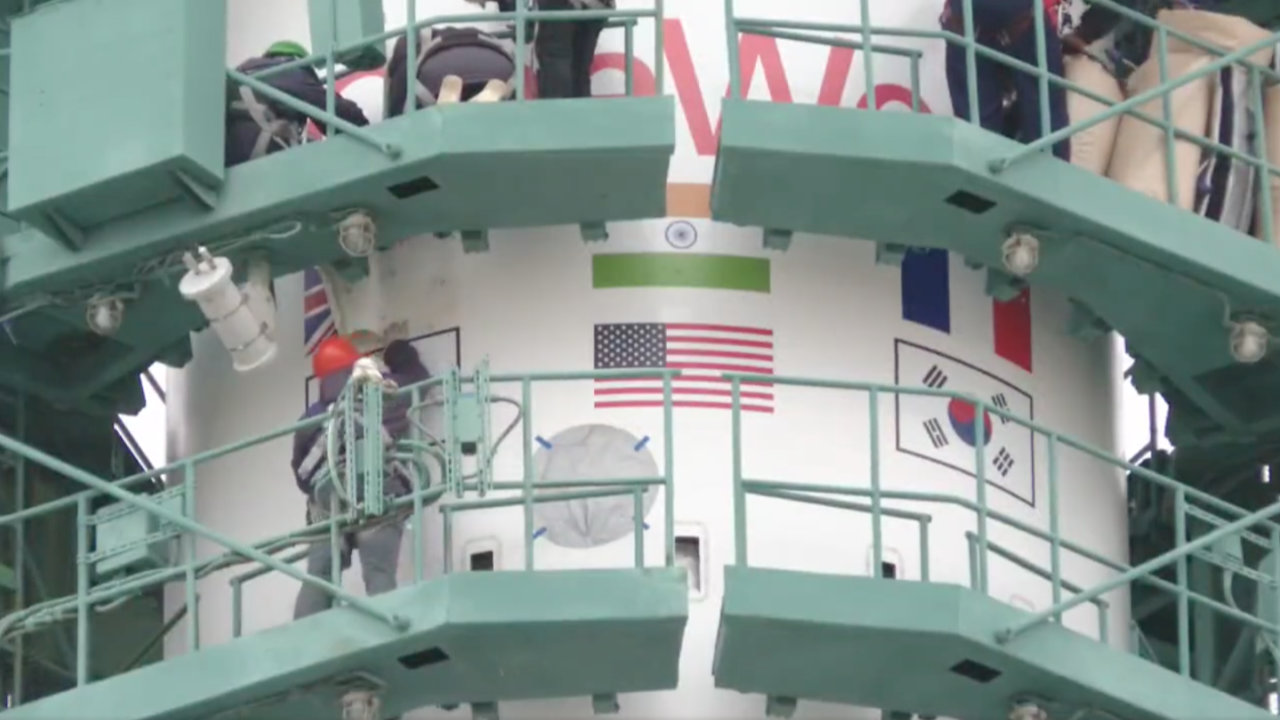
Launches of Soyuz from the European spaceport in French Guiana were immediately halted and the Russian workforce was expelled, despite several planned launches of major satellites for European government organizations. The German eROSITA X-ray instrument onboard a Russian X-ray telescope was immediately shut off, despite the loss of important observations. ESA’s Mars rover with a Russian lander and a Russian rocket was shelved pending a reevaluation of the program to remove ties to Russia. European space collaboration with Russia was very suddenly over, and the OneWeb debacle effectively closed the commercial launch market from Russia.
This left a void, not only in Europe, but in the West as a whole, and all paths seem to lead back to America, mostly to a single company.
The Return of American Excellence
The 90’s and 00’s were a dower time for the American space industry. The Space Shuttle had failed to live up to expectations and killed two crews—and the space station project had only survived in the form of an international collaboration (and it was nearly canceled anyways). The Shuttle itself was doomed to cancellation, while programs for further human exploration and advanced launch vehicles routinely failed implementation. The commercial launch market had moved almost entirely away from the US to Europe, Russia, and even China. But stagnant markets and failed ambitions are a ripe place for upstarts to seize a foothold if given a chance, and NASA still desired to develop more ambitious capabilities.
With an extreme amount of work and a bit of luck, SpaceX was able to gain that foothold and begin delivering true American excellence in spaceflight. It started with cargo delivery to the ISS, which replaced a service the Shuttle had performed at a fraction of the cost and with no human risk. The Falcon 9 rocket quickly turned towards the commercial market, and began wooing satellite providers back to the US for launch, particularly away from the increasingly unreliable Russian Proton rocket. Cargo capabilities would be leveraged into the first 21st century crew spacecraft, ending reliance on the Russian Soyuz for NASA, and enabling true commercial orbital human spaceflight for the first time in history. Launch cadence would be leveraged to develop first stage and fairing reuse, lowering launch costs and paving the way for even higher launch cadence, which in turn paved the way for the most revolutionary satellite constellation ever launched—Starlink—with 7000 satellites and counting providing high speed low latency internet to the world. The low cost reliable launch would also disrupt the US government, forcing ULA to cut costs and saving billions of taxpayer dollars on both SpaceX and ULA provided launches.
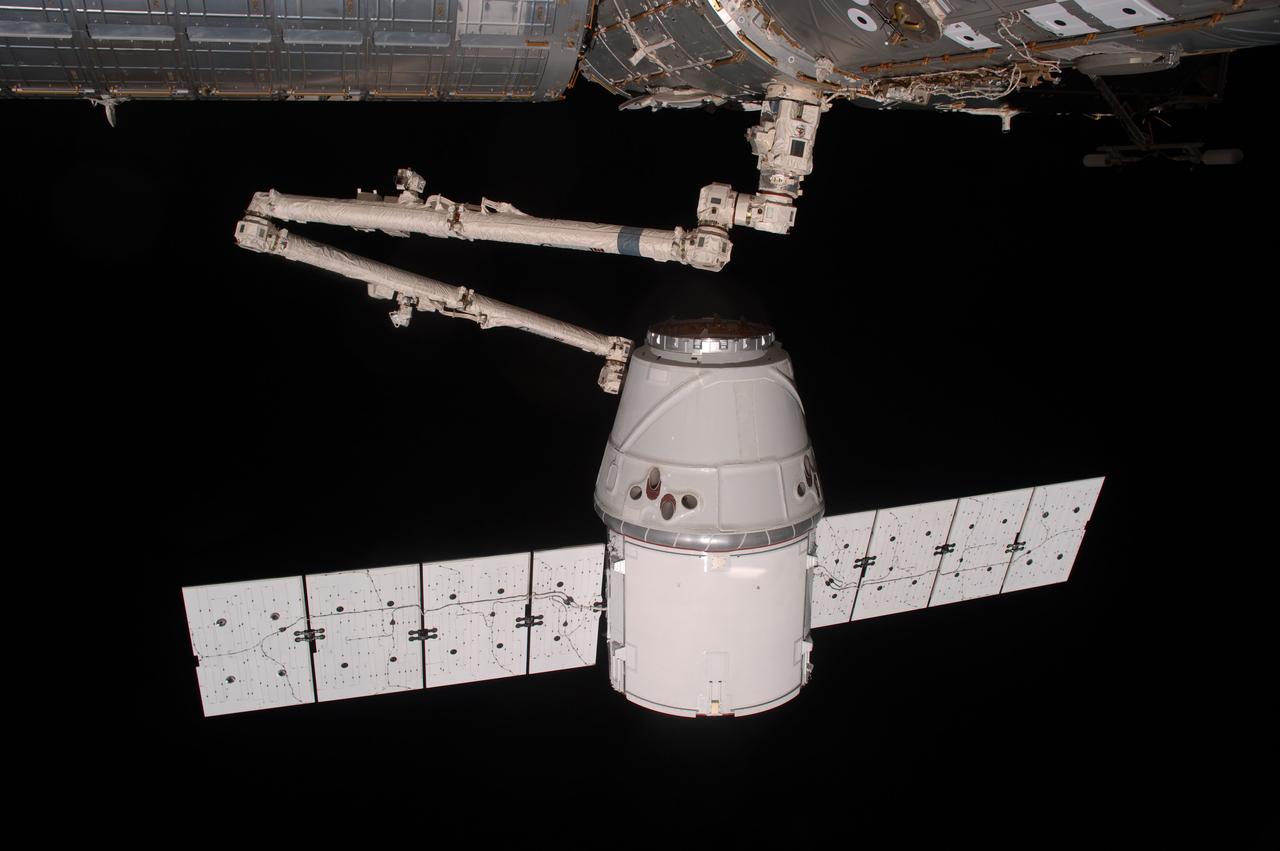
By 2020 the US had seized the mantle of most orbital launches from Russia and China, and SpaceX now launches over half of all orbital launches, and over 80% of all mass to orbit. US excellence in launch and in crewed spaceflight had returned, and with the path blazed by SpaceX, the entire US space industry would be upheaved by new entrants in launch, satellite manufacturing, space services, last mile delivery, and every other area.
SpaceX launch excellence also became a forcing function on the rest of the launch industry, driving ULA towards Vulcan, Arianespace towards the Ariane 6, Mitsubishi Heavy Industries towards the H3, and spawning dozens of copycat rockets in China, Russia, America, and even Europe. Unsurprisingly, government backed programs that started when SpaceX was beginning to land rockets would take a full decade to reach the launch pad at greater expense and with less capability than their SpaceX counterparts. Recovery and reuse efforts around the world remain unfulfilled, including in China where the concept has taken root in even the most high profile government projects.
The Only Game in Town
When the international reaction to Russia’s second invasion of Ukraine left dozens of spacecraft without a rocket, the rest of the industry was in the middle of retiring their flagship launchers while replacements were still years away. That left only one place to turn, SpaceX. OneWeb, whose satellites had been seized by Russia, turned to India for two launches and SpaceX for four launches to finish launching its constellation. Northrop Grumman turned to SpaceX for Cygnus launches while it once again worked on a redesign of Antares. ESA and the European Commission begrudgingly turned to SpaceX to launch high value scientific, civil, and military spacecraft while they awaited the readiness of Ariane 6.
ESA also turned to NASA for help with their Mars Rover, and NASA agreed to contribute launch (likely a SpaceX rocket) as well as replacements for some of the Russian components on the rover, including the nuclear power pack and several scientific instruments.
Commercial Launch Demand
Although not distinctly geopolitical, the distribution of commercially competed launch contracts helps clarify the state of the launch market today. We will start in 2010, preceding the Falcon 9’s entry onto the commercial satellite launch scene by several years, and look at a breakdown of commercial satellite launches by rocket over time.
I consider this data in two lights, number of launches, and number of Falcon 9 equivalent launches. Number of launches indicates all rocket launches whose payloads could conceivably have launched on other rockets and are commercial in nature. We exclude most government payloads since they tend to launch on domestic rockets. We also exclude most launches out of China since there is little cross-pollination with the West in terms of customers. Chinese customers use Chinese rockets, and American customers are legally prohibited from using Chinese rockets, so the handful of other commercial entities that choose Chinese launch are generally insignificant and not indicative of market trends.
The data is definitely not perfectly accurate, as I had to decide what out of the nearly 15,000 payloads launched since 2010 were ‘commercial’. I excluded Starlink from consideration, since launch of Starlink is not commercially competed.
Falcon 9 equivalence (F9E) is a subjective measure used to ‘equalize’ rockets based on payload capacity to better measure the ‘market share’ of payloads they launch. Instead of raw mass, I base this on how many launches (or what portion of a launch) a set of payloads would need if launched on Falcon 9. For example, dual booked Ariane 5 GTO launches count as 2 F9E launches, while a launch of a single satellite that would get launched in batches of 10 on Falcon 9 would count as 0.1 F9E. My raw data is available HERE for those interested in my exact judgement calls. Thanks to Jonathan McDowell for the excellent bookkeeping, I used his launchlog as my primary data source.
China and SpaceX Imitation
SpaceX clearly changed the launch landscape, especially after they started reusing rockets and increasing launch rate. This has spawned a plethora of imitators in various forms, from small launch startups looking to replicate the Falcon 1 right through to government programs focused on achieving rocket reuse at scale. Nowhere else does this imitation reach the same levels of nearly blatant plagiarism as it does in China.
Unlike the rest of the world, where launch startups are predominatly shutting down and going bankrupt even after reaching orbit, in the last 5 years China has managed to foster a seemingly limitless number of new rocket programs that are actually making hardware, performing tests, and serving customers. The level to which each of these programs can be considered private varies greatly—from fully government programs, to ‘commercial’ arms of government institutions, to private companies using government developed hardware, to what appears to be properly private efforts to develop brand new hardware. What almost all of these programs have in common is a complete embrace of SpaceX’s designs with no baggage (or laws) to hold them back.
Although most of the new Chinese launch startups have begun with small rockets, often using off the shelf government solid motors, these do seem to be, for the most part, stepping stones to larger ambitions. Almost any slide deck with proposed rocket designs contains something that looks like a Falcon 9, Falcon Heavy, Starship, Dragon, or SpaceX landing infrastructure. Falcon 9 is the most heavily imitated, with many groups focused on similar sized rockets with first stage reuse. One common modification is to use methalox (methane fuel and oxygen) instead of the Falcon 9’s kerolox (kerosene fuel and oxygen), however this too is SpaceX imitation, as SpaceX has itself pivoted to methane for Starship (along with much of the western launch industry).
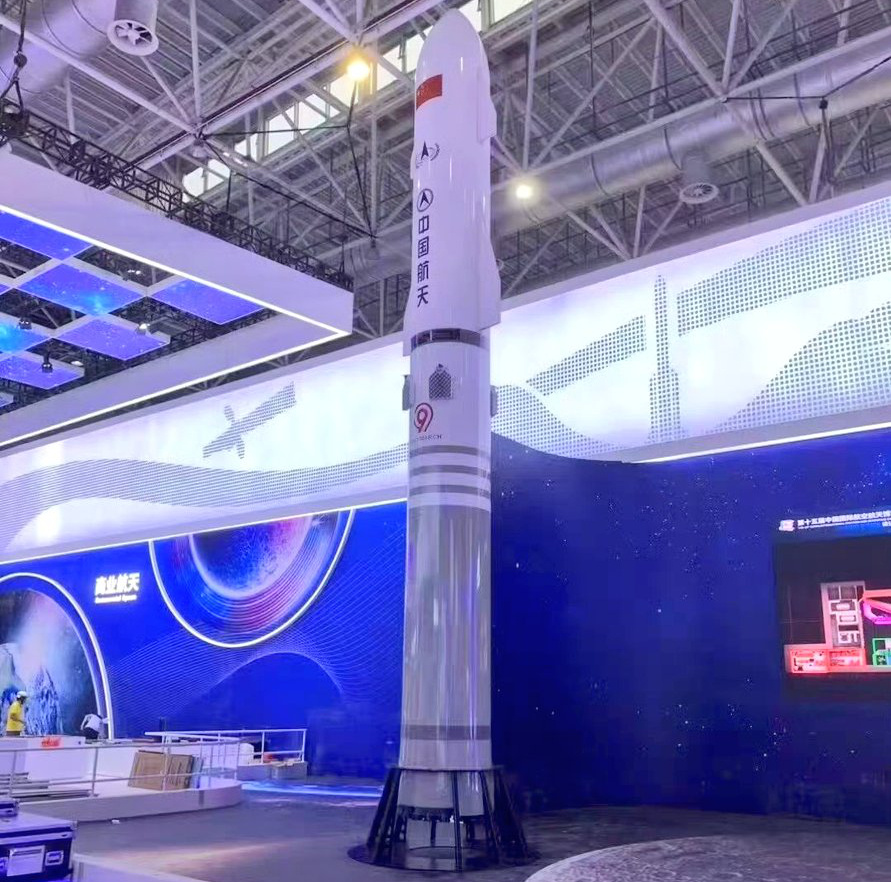
There are even more ambitious copycats, including the Chinese Aerospace Science and Technology Company (CASC), developer of Chinese human spaceflight hardware, whose lunar base ambitions hinge on a super-heavy rocket that is clearly based on SpaceX’s Starship—admittedly with a much longer development timeline and more modest early versions. Even mere weeks after SpaceX first caught a Superheavy rocket in their launch tower’s “chopsticks”, programs in China have been advertising copycat catch systems.
It is a strange market, because the number of individual rockets and rocket families in China keeps expanding such that any individual variant and often entire companies only launch a single digit number of times per year despite the increasing total Chinese launch rate. And yet, these programs only grow more ambitious and few if any show any signs of running out of capital runway—whereas equivalents in the West continue to peter out, descope, or face ever increasing delays. Even people following the Chinese aerospace sector closely can’t explain where the momentum is coming from.
A True Space Superpower
All of this pseudo commercial space activity in China comes as the country has risen to a clear overall 2nd place in terms of total spaceflight capability. As only the third country to develop human spaceflight capability, they have now reached the same capabilities as the the peak of Soviet Union or Russian achievement with China’s own crew spacecraft, cargo vehicle, and modular space station. With a next generation crew vehicle aimed at lunar ambitions, China is poised to surpass Russia’s achievements quite decisively, with the now disgraced former superpower only able to vie for a hopefully privileged spot in China’s shadow.
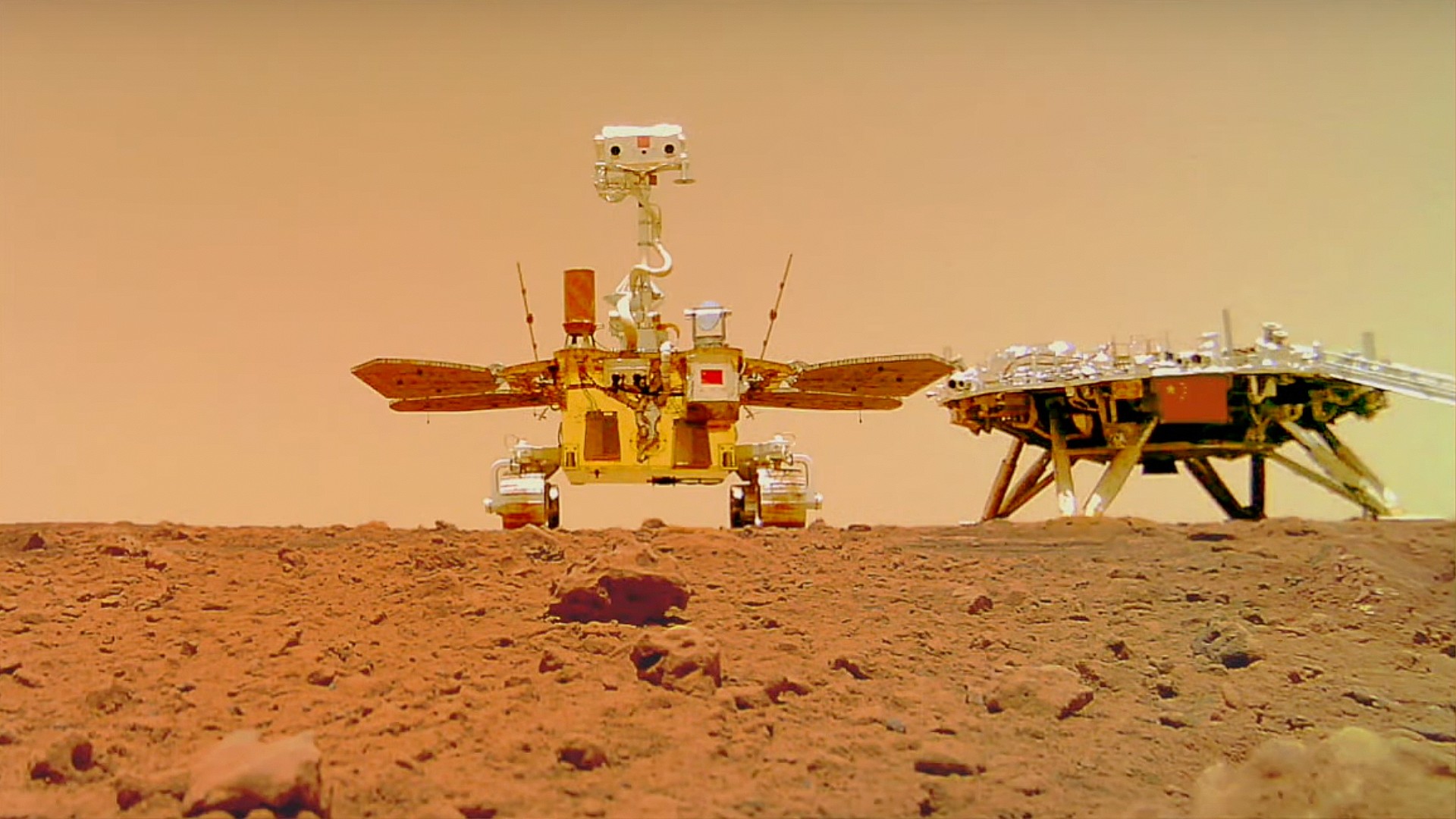
In robotic exploration, China is also now a world leader, though competition is fiercer than in human spaceflight. They have returned lunar samples and operated lunar rovers, matching the Soviet achievements on our Moon. With Tianwen-1, China became only the second nation to operate on the surface of Mars for any meaningful period of time. However, while these missions exemplify China’s capability and potential, the breadth of China’s robotic exploration experience lags behind that of Europe, who has beat China to comets, asteroids, the inner planets, and the outer solar system. Japan also has significant robotic exploration achievements still unmatched by China. China’s planned manifest for lunar and solar system exploration does show that they are clearly not going to sit on their laurels, such as their planned Mars sample return that would beat even the Americans at such a feat.
The pace and significance of China’s civil space program reflects the progress being made across all other areas of aerospace in the country. Over the last several years the Chinese launch rate has grown significantly, surpassing all but cold war era Soviet launch rates, and that of SpaceX. When I get rocket launch notifications on my phone, I barely have to check them. In all likelihood, another Falcon 9 lifted off, probably carrying Starlink satellites, but if it isn’t a Falcon, it is usually something out of China. This increase in launch rate requires a commensurate increase in payloads, especially since most Chinese payloads are domestic. Here again, China has grown quickly, with the full range of government and commercial capabilities represented. Navigation, surveillance, communications, meteorological, scientific, and more all have a place in the Chinese satellite menagerie. Increasingly these take the form of constellations, and the beginnings of communications megaconstellations modeled after SpaceX’s Starlink are already in Earth orbit.
Therefore, it is no surprise that when the US politicians need a ‘them’ for their ‘us versus them’ in the field of spaceflight, they point to China. It is no surprise that in human exploration, there are only two major programs, NASA’s and China’s. It is no surprise that the increasing animosity between the US and Russia coupled with Russia’s feeble spaceflight budget have led to Russia signing on as a partner for China’s lunar plans. It is no surprise that the first methalox powered rocket to fly was in China. It is no surprise countries are divvying themselves between the US led Artemis Accords and the Chinese Lunar Research Station project. And it is no surprise that despite spaceflight leaders in both countries vocalizing a desire for collaboration, America’s Wolf Amendment remains an untouchable barrier preventing almost any space related interaction with China.
Will Vulcan Live Long and Prosper?
So let us come back to the present and back to America, where the third Vulcan rocket is preparing for flight, this time with a payload for the US military. In all likelihood, whatever is launched on this next Vulcan will be used to spy on China, or support troops that are positioned just off China’s coast, or in some other way provide some service for the American government in their ongoing concern with China. Vulcan itself has a bright future, with more contracted launches than nearly any other rocket, but times are changing, and while shifting geopolitics helped create and destroy the Atlas V, those same forces may not be enough to save Vulcan in a commercially dominated landscape.
Vulcan is the first of a new breed of heavy lift American launchers, but it isn’t the last, and it may not be enough to remain viable amongst the newest crop. SpaceX’s Starship looms largest on the horizon, having already outpaced Vulcan in launch rate, but Starship has many tasks that do not interfere with Vulcan’s core market, and SpaceX is already a thorn in ULA’s side. More concerning perhaps is Blue Origin’s New Glenn, coming to fruition only a year behind Vulcan and promising vastly more capability. If New Glenn ends up being competitively priced and achieves a high flight rate, Vulcan will start to be in real danger. Amazon’s Kuiper constellation, the biggest customer for Vulcan, clearly would prefer to launch on the even larger New Glenn, and may end up transitioning to New Glenn exclusively in the long term. The US government has already began eying New Glenn, with the rocket’s onboarding into the DoD’s National Security Space Launch (NSSL) program posing the gravest threat to Vulcan, whose fundamental purpose is to serve the needs of the US military. Vulcan has a significant manifest under NSSL phase 2 and all indications are the ULA and SpaceX will once again win major contracts for NSSL phase 3, but Blue Origin appears slated for a third place position. This could pave the way for a Blue Origin and SpaceX led NSSL phase 4, leading to a significant loss of business for Vulcan in the 2030’s.
There are of course, even more competitors vying for national security and constellation customers, including Rocket Lab with Neutron and Firefly with their MLV, but neither rocket seems likely to get a coveted NSSL lane 2 position, given the demanding requirements. Still, they could erode away at the the edges of Vulcan’s market. Perhaps ULA’s plans for Vulcan upgrades will help it remain relevant, including partial reusability of the first stage engines, long duration and potential refueling capabilities for the Centaur upper stage, and even a role as a space based interceptor—but both Blue Origin and SpaceX already have or are developing similar capabilities with Starship and New Glenn using lucrative NASA contracts. It’s hard to see any reason save military favouritism keeping ULA in the limelight long term.
A Crystal Ball
We’ve caught up to the present, but what is the future? The geopolitics of the next decade will play a major role in premiere space programs, and there are many interesting stories to follow. If I had a crystal ball that could show me what will be in spaceflight, the following predictions and watch items are what I would expect to see.
Europe: Insular or Americentric?
A long term collaboration has existed between ESA, the various European space agencies, and NASA. This has not prevented European space collaboration with Russia, China, or Japan (absent the US). Recent world events have shifted up this widespread collaboration. Working with Russia is all but completely over, as we’ve seen. Collaboration with China has been long attempted, but appears to be going nowhere fast, with only modest scientific cooperation, and planned European astronaut missions to the Chinese Space Station apparently canned. Japan (and to a lesser extent Canada) will clearly remain important scientific partners. The real question is whether Europe will be driven towards or away from more collaboration with the United States, and in what capacity.
On the one hand, ESA has a long and mostly positive history collaborating with NASA—including in human spaceflight—and is one of the largest partners in the Artemis program, America’s return to the Moon. On the other hand, European industry is incredibly wary of relying on American industrial capability, particularly that of SpaceX. More and more, European industry, astronauts, and spaceflight leaders are calling for improved domestic capability, while NASA moves towards commercial (American) providers for many capabilities.
Will Europe be willing to pay American companies for launch, human spaceflight, and space station capabilities alongside NASA? Despite the desire for domestic human spaceflight, it isn’t clear where a budget for home grown capabilities would come from. The upcoming Trump administration and Elon Musk’s position in it may also sour relations. How much collaboration—and in which areas—there is between Europe and the US is definitely something to watch in the next decade.
Russia: Is it all Over?
Russia’s side in the coming decade has already been made clear. Further collaboration with the West is not possible, so China is the only option. The open question is whether Russia will be able to maintain its capabilities, particularly crewed spaceflight. The ISS is set to be deorbited in 2030 or shortly thereafter, so will that be the end of Russian human spaceflight? A new crew vehicle is ostensibly being designed, a new space station is supposedly the plan, and reusable rockets and communications constellations are reportedly just around the corner. Will any of these development projects pan out? I think the Russian spaceflight story is nearly written, all that remains is to see how it ends.
India: New Kid on the Block
Although I haven’t much mentioned India in this post, they are one of the most interesting nations to watch going forward. India is poised to become only the 4th nation to develop domestic human spaceflight in the coming years, and they have commendable rocket, satellite, and robotic exploration programs. Crucially, they are the only major space power that hasn’t really picked a side in the US vs China geopolitical game, choosing to mainly stick to their own path. Collaboration with the West appears more likely, but only in specific cases and not in larger programmatic ways. Expect to see an Indian Astronaut visit the ISS soon, and watch the progress of their homegrown capsule. Perhaps India will become a customer of commercial space stations, serviced with their own spacecraft.
The Little Guys
It feels bad to call some of these nations ‘little’, even in regards to space, but geopolitically they have little individual power. Established aerospace industry in Japan, Canada, the UAE, Israel, Korea, and other places are in many respects quite impressive. This is particularly true in Japan, which has many domestic capabilities, including medium to heavy launch. The thing to watch in these countries is how they continue to contribute internationally amid changing political and technological landscapes. If these countries and their industrial bases can find innovative and unique contributions to international projects, such contributions will be welcomed. If they become technologically eclipsed, I’m not sure if they will find participation nearly so easily accepted.
China: Speedrunning Space
China will land humans on the Moon, they will return samples from Mars, they will develop domestic internet mega-constellations, they will achieve rocket reuse. Technologically the path is set, these will happen unless political will gives out. The question is how soon. China usually hits its spaceflight timelines, but many of these newest projects are especially ambitious, and some of these projects are being undertaken by commercial industry. If they continue steamrolling the spaceflight tech tree, China could start to vie with America for the position of top space superpower during the next decade. The question that concerns us is, will it matter? What effects will Chinese spaceflight dominance have on the wider spaceflight community, given the insular nature of the Chinese aerospace industry? If US dominance continues, and there isn’t a change in policy regarding US–China cooperation, then the West may see Chinese spaceflight only as a political flag to be waved in caution.
America: BFR Yeah!
Even with China’s sensational TWR as it rockets up the space tech ladder, American dominance in space is a sure thing. Although stagnant for a long time, the American commercial space industry is now at the forefront of many technologies and capabilities, spearheaded by SpaceX and it’s cadre of alumni-led startups. However, political winds change, and regulation is a common source of concern amongst those trying to do new things in space. Consistency in the civil space program will maintain international partnerships, but explosive change may increase pace. Watch NASA’s flagship programs. Watch industry’s pace in relation to China and Europe. Watch for regulatory reform, and take note if any within private industry are driven to other countries to escape regulatory suffocation. The US may be poised on the largest expansion into space in history, and in some ways (Starlink) it already is.
